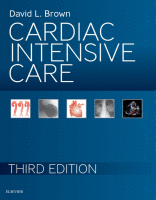Physical Address
304 North Cardinal St.
Dorchester Center, MA 02124

Recent decades have seen great growth in the number of adults with congenital heart disease (ACHD). Between 1985 and 2000, the number of adults with congenital heart disease has doubled, resulting in approximately 1 million adult survivors in the United…

Over the past 2 decades, significant advances have been made in the understanding of the pathophysiology of pulmonary hypertension. In addition, dramatic improvements have occurred in the diagnostic and therapeutic approach of patients afflicted with this disease. The resulting development…

Acute pulmonary embolism (PE) represents the sudden obstruction of part or all of the pulmonary arterial vasculature, usually caused by embolization of thrombus from the deep veins within the lower limbs and pelvis. It may also be caused by embolism…

Respiratory failure is defined as the inability to maintain either the normal delivery of oxygen to tissues or the normal removal of carbon dioxide from the tissues. From a physiologic perspective, respiratory failure can be caused by diffuse pulmonary dysfunction…

Pericardial disease is encountered less frequently than myocardial disease in the cardiac intensive care unit (CICU). However, its ability to mimic ischemic heart disease and congestive heart failure can make the diagnosis of pericardial disease challenging at times. While many…

Introduction Acute thoracic aortic syndromes comprise a spectrum of medical and surgical emergencies, including acute aortic dissection, penetrating aortic ulcer, and aortic intramural hematoma. All of these conditions are potentially life threatening and warrant prompt diagnosis and emergent management. The…

Definition Hypertensive emergencies are characterized by severe elevations in blood pressure (BP) (>180/120 mm Hg) complicated by impending or progressive target organ dysfunction. Targeted organs typically include the aorta, brain, eyes, heart, and kidneys. Immediate (minutes to hours) BP reduction is…

Acute deterioration in valvular function represents a tremendous challenge to the practicing clinician. The presentation of valvular emergencies is usually dramatic; a thorough knowledge of predisposing etiologies, hemodynamic abnormalities, and therapeutic modalities is essential to making appropriate management decisions. Despite…

Introduction Supraventricular tachycardias (SVTs) occur frequently in critically ill patients and are associated with increased morbidity and mortality. Immediate exact diagnosis is not necessary and initial management should focus on ensuring hemodynamic stability. Tachycardias should be characterized by QRS complex…

Ventricular tachycardia (VT) accounts for 5% to 10% of admissions to cardiac intensive care units (CICUs). With the successes of modern reperfusion therapy to reduce mortality in ST elevation myocardial infarction (STEMI), of pharmacotherapy and implantable cardioverter defibrillators (ICDs) to…